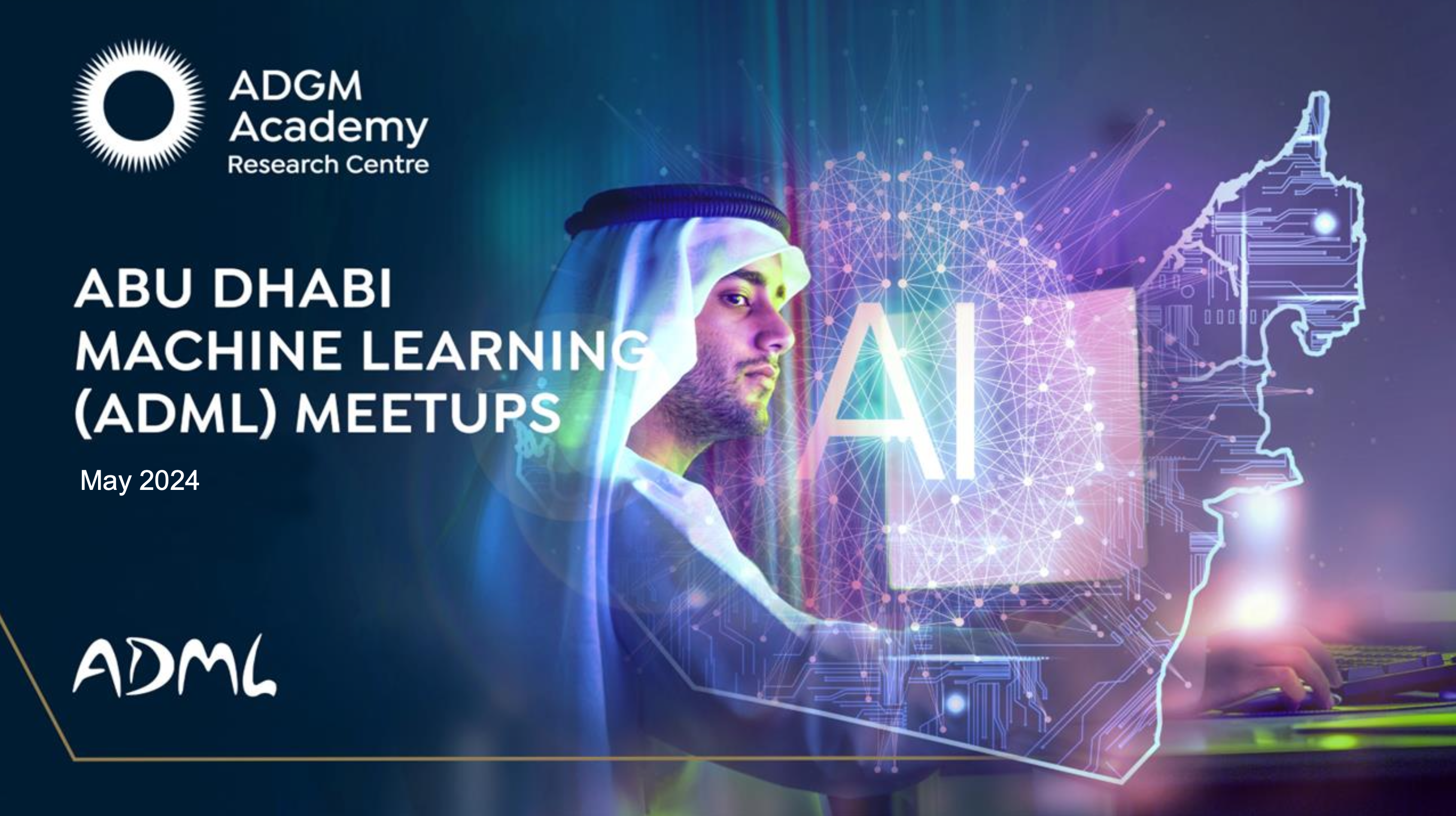
Abu Dhabi Machine Learning Season 4 Episode 2
21.05.2024 - Abu Dhabi Machine Learning - ~3 Minutes
When?
- Tuesday, May 21, 2024 from 3:00 PM to 5:00 PM (Abu Dhabi Time)
Where?
- ADGM Academy, 20F, Al Maqam Tower, Al Maryah Island, Abu Dhabi
The Meetup page of the event:
Abu Dhabi Machine Learning Meetup Season 4 Episode 2
Programme:
Talk 1: Learning to Learn Financial Networks
Abstract: In this event, Stacy will talk about her two PhD publications:
- Learning to learn graph topologies
- Learning to Learn Financial Network to Optimise Momentum Strategies
In the rapidly evolving field of machine learning, the innovative paradigm of Learning to Learn (a.k.a. Learning to Optimise), has emerged as a notable approach, blending the adaptability of data-driven learning with the interpretability of rule-based optimisation. In this talk, Stacy will share insights from her NeurIPS publication titled “Learning to Learn Graph Topologies” (L2G), and its significant applications into the financial domain. Stacy’s research introduces an innovative methodological advancement in algorithmic unrolling, designed to refine the learning process for graph adjacency matrices. This approach is faster, more accurate, and offers increased flexibility compared to traditional methods, especially on rich topology representations and downstream task integration. The core of Stacy’s presentation will be the L2G framework’s adaptability to a broad range of downstream tasks, with a particular focus on a systematic trading strategy. In one of her follow-up paper, titled Learning to Learning Financial Network to Optimise Momentum Strategies, L2G framework has been applied to simultaneously learn graph topologies and optimise network momentum strategies for macro assets. The portfolio performance was gained from the flexible learning framework that can be trained with the negative Sharpe ratio, and accuracy capture the interconnections of these macro assets.
Speaker: Stacy Pu is a quantitative researcher. Before moving to Abu Dhabi, she worked at several hedge funds in London, focusing on machine learning strategies for systematic trading. She received her PhD from the University of Oxford, where her studies were fully funded by the Oxford-Man Institute of Quantitative Finance. Throughout her doctoral research, Stacy specialized in graph machine learning, exploring the intricate process of learning graph structures through the lenses of probabilistic graphical models, graph signal processing and deep learning. Her machine learning research is notably recognised for its application to financial markets. Specifically, she has published several papers on how graph machine learning can enhance systematic trading strategies, and also improve risk management through better forecasting of realized volatility.
Talk 2: Harnessing Generative AI: Strategies for Business Innovation and Efficiency
Speaker: Dmitriy Kaliada is an IT professional with over 22 years of experience in the industry. He has spent 8 of those years driving various data and AI initiatives under the G42 umbrella in the UAE. During his tenure, he successfully implemented several innovative projects that leveraged cutting-edge technologies to deliver impactful results.
Now, Mr. Kaliada has shifted his focus towards private initiatives, e.g. building an innovative Allessent ecosystem based on generative AI use cases in the Text and Imagery domains. He aims to offer a comprehensive suite of AI-powered solutions to help businesses improve their operations, enhance customer engagement, and drive innovation.
Talk 3: Linear Generative Models: Insights from Random Matrix Theory
Abstract: In this talk, we will delve into the asymptotic study of simple linear generative models when both the sample size and data dimension grow to infinity. In this high-dimensional regime, random matrix theory (RMT) appears to be a natural tool to assess the model’s performance by examining its asymptotic learned conditional probabilities, its associated fluctuations, and the model’s generalization error. This analytical approach not only enhances our comprehension of generative language models but might also offer novel insights into their refinement through the lens of high-dimensional statistics and RMT.
Speaker: Mohamed El Amine Seddik